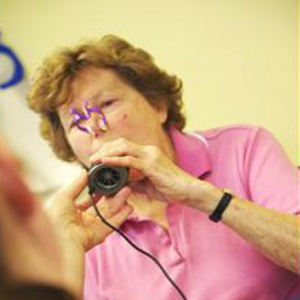Most patients with COPD present with lower respiratory symptoms in primary or secondary care within the five years before they are diagnosed, claim UK researchers.
Their study showed 85% of patients presented to either primary or secondary care with lower respiratory symptoms at least once in the five years leading up to their actual diagnosis.
The study authors say the results show that opportunities to pick the disease up earlier are frequently being missed.
The study – published in The Lancet Respiratory Medicine – identified 38,859 patients diagnosed with COPD between 1990 and 2009, using data from general practice databases, and analysed their records for potential missed opportunities for diagnosis, such as consultations for lower respiratory symptoms and chest X-rays, as well as respiratory-related outpatient or unplanned hospital admissions.
Among smaller numbers of patients with sufficient data, the results suggested over half could potentially have been diagnosed between six and 10 years before actual diagnosis, while over two-fifths of patients could even have been diagnosed 11-16 years sooner.
Co-author Dr Rupert Jones, clinical research fellow at the Peninsular School of Medicine and Dentistry and a GP in Plymouth, told Pulse the main problem was patients who had repeated consultations for lower respiratory complaints without COPD being explored.
Dr Jones said: ‘There were certainly many, many cases where people had been followed up and diagnosed accurately. But there were some where there had been repeated consultations for symptoms and treatment with antibiotics, and some had chest X-rays on more than one occasion without having spirometry done.
He added: ‘What we’re really highlighting is, in those patients who come with [lower] respiratory symptoms or infections, bear in mind COPD, particularly if they’ve got risk factors. And if you’re going to do a chest X-ray then you ought to be thinking about whether they need to have spirometry at the same time.’
Dr Jones said the findings could be used to inform a case-finding strategy for COPD.
He said: ‘We don’t recommend doing spirometry on people who don’t have symptoms – COPD is a disease of symptoms. But it would be worth case-finding, so people with symptoms and risk factors should be considered for the diagnosis.
‘Spirometry is a good way of doing it, but some people use screening questionnaires, others use screening spirometry – quick hand held devices, which can rule out COPD, but if abnormal need to be followed up with quality-assured diagnostic spirometry.’
Lancet Respir Med 2014; available online 13 February

















